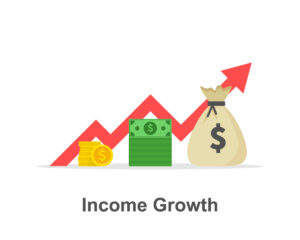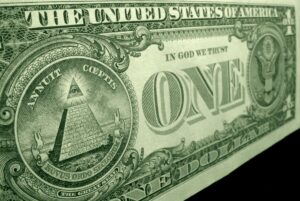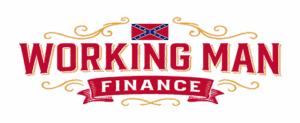The Journey from Raw Material to Market Value: Unraveling the Chain of Prices
Raw material prices serve as the initial gauge, a currency chorus for commodities in their natural state – wheat, corn, iron, and oil among the ensemble.
Yet, these raw elements undergo a transformation, entering the grand symphony of manufacturing, wherein their value crescendos.
The harmonious symphony of the selling price encompasses a multitude – from raw material producers and laborers to tax collectors and holders of interest coupons.
This symphonic division is pivotal, for it resonates through each class of producer, dictating their ability to partake in the consumption of finished goods.
The integrity of these raw material prices, resonating in fair proportion to manufactured goods, becomes paramount.
An honest distribution of wealth derived from sales fuels the ecosystem, empowering raw material producers to traverse the economic landscape as consumers of manufactured wealth.

The Raw Deal: Unraveling the Ripple Effects of Raw Material Prices
Honest raw material prices aren’t just an economic quirk; they’re the lifeblood of a vast segment of our population engaged in primary production.
When these producers don’t receive adequate compensation for their raw wealth, the fallout ripples across the economic landscape.
The inability of farmers to purchase manufactured city goods leads to underutilized urban plants and factories, laying off workers who are essential consumers of farm products.
This negative spiral deepens depression as it cripples both the sale of farm goods and the purchasing capacity of factory laborers.
Unveil the hidden truths in ‘The Bankers’ Conspiracy! Which Started the World Crisis‘ by Arthur Kitson, and discover the forces behind global economic upheaval.
The Economics of Pricing: Balancing the Cost of Living
It’s a common misconception that high raw material prices drive up the cost of living.
Contrarily, the fraction of raw material costs in factory-produced goods does not significantly impact consumer prices.
In fact, elevated raw material prices empower producers, like farmers, to bolster their purchasing power for city-manufactured goods.
This increased demand for urban products propels factories to operate at full tilt, reducing per-unit production costs through enhanced efficiency and larger production volumes.

Unbalanced Scales: The Pricing Divide Between Producers and Distributors
Despite the pivotal role of raw material producers, particularly farmers, in the broader market for city-manufactured goods, they remain underserved.
The disparity in compensation between producers and distributors is glaring.
While farmers contribute substantially to the production chain, the distribution costs for manufactured items such as bread or suits disproportionately tip the scales, leaving raw material producers short-changed in the market exchange.
Distribution Costs: The Hidden Forces at Play
Distribution costs aren’t merely operational expenses; they’re the lifeblood of commerce.
Covering handling, merchandising, and transportation, these costs skyrocket in the United States due to limited raw material production and manufacturing.
When these costs spike, they become a millstone around the middle and working classes’ necks, elevating living expenses and reducing employment opportunities for 55 million citizens engaged in raw material production.

Unemployment and Poverty: The Cost of Economic Imbalance
Restricted production and high distribution costs aren’t just statistics; they result in unemployment and poverty.
When producers and distributors can’t match the market demand due to price imbalances, it leads to underutilized factories and transportation systems.
The fallout is severe, as these systems are forced to operate well below capacity, pushing a significant chunk of the population out of the market.
Manipulation of Price Levels: A Damaging Trend
The deliberate manipulation of raw material prices has marked the past decades, wreaking havoc on the agricultural sector.
From secret meetings in 1920 aiming to collapse agricultural prices to more recent systemic control, the suppression of prices below production costs spells disaster for farmers.
This manipulation hinges on changes in the volume of money without a proportional shift in wealth production, dismantling the farmer’s livelihood.

Reclaiming Financial Sovereignty: The Role of Genuine Money
The control of genuine money by the government isn’t just about semantics; it’s about rectifying a financial system plagued by fictitious lending practices.
Genuine money issuance by the government signifies a fundamental shift from banks creating credit out of thin air to lending actual money sourced from real depositors.
This shift aims to curb unjust profits by privileged bankers, restoring fairness and equity in financial dealings and putting an end to exploiting labor for disproportionate gains.
Decoding the Price Puzzle: Unveiling the Role of Money Manipulation
Unraveling the complexities of pricing brings to light a disturbing reality: wealth exchange, seemingly straightforward, is entangled in a web of dollar fluctuations.
Despite the stability of wealth volume, the ebb and flow of prices are orchestrated by the secretive maneuvers of private money creators.
These manipulations, masquerading as wealth restriction, serve as a shield for debt merchants seeking payment for their fictitious loans, becoming the insidious architects of enduring economic depressions.

Fictitious Loans: Architects of Economic Strife
At the heart of this economic conundrum lie the fictitious bank loans, sown by the debt merchants.
These loans, demanding payment for nonexistent money, stand as the prime instigators of prolonged depressions.
The cycle of despair persists until a paradigm shift occurs, demanding the honest issuance and regulation of money—a critical step in dismantling the shackles that bind the economy to the whims of a privileged few.
Explore the revolutionary ideas in ‘Wealth, Virtual Wealth and Debt‘ by Frederick Soddy, and uncover the true dynamics of wealth and the foundations of economic stability.
The Nation’s Dilemma: A Battle for Economic Survival
As the nation grapples with the choice between preserving the international debt merchants’ lucrative scheme or safeguarding its own well-being, a stark reality emerges.
The regulation of money becomes imperative, not just for the sake of stabilizing prices but to inject interest-free money into circulation.
This injection is the lifeline for raw material producers, ensuring their ability to purchase essential goods.
A failure to address this dilemma casts a shadow of depression upon all laborers, underscoring the urgency of redefining the nation’s economic course.









